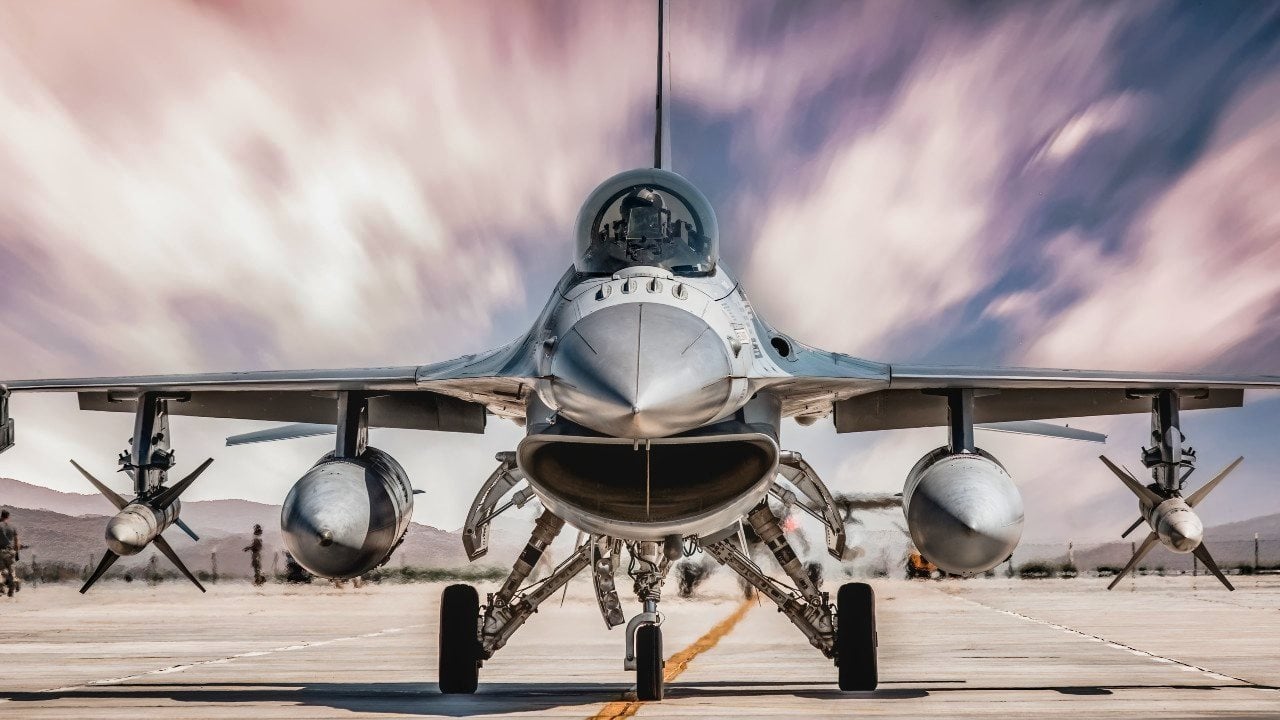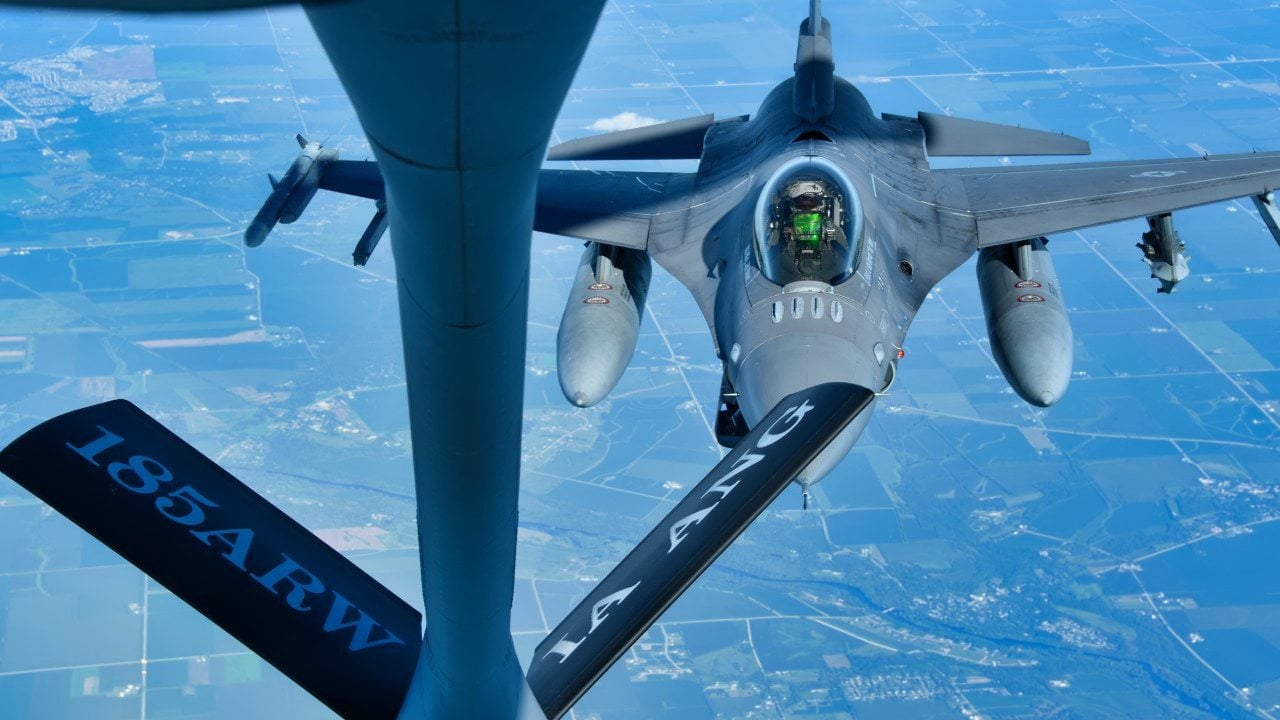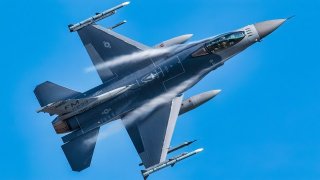An F-16 Super Squadron is Being Formed Right in North Korea's Backyard
The Seventh Air Force in South Korea is enhancing its F-16 Fighting Falcon force at Osan Air Base by adding nine aircraft from Kunsan Air Base, creating a "Super Squadron" with 31 F-16s.
Summary and Key Points: The Seventh Air Force in South Korea is enhancing its F-16 Fighting Falcon force at Osan Air Base by adding nine aircraft from Kunsan Air Base, creating a "Super Squadron" with 31 F-16s.

-This temporary one-year shift aims to test and optimize combat capability, increase readiness, and evaluate the impact on sortie generation, maintenance, manpower, and logistics.
-This move is likely in response to potential threats from North Korea and China. Alongside the aircraft, 150 aircrew and support personnel will transfer to Osan. Kunsan AB will retain 13 F-16s, continuing routine training to maintain ROK-U.S. combined readiness.
Here Comes the F-16 Super Squad
Bigger isn't always better – but then again, sometimes it most certainly is! That is the case made this week by the Seventh Air Force, headquartered at Osan Air Base, South Korea, as it announced it will supersize its F-16 force.
On Thursday, the Seventh Air Force – which continues to play a central role in American military presence as a component of the United States Forces Korea (USFK) – began the initial aircraft and personnel movements that will "temporarily shift" the placement of United States Air Force F-16 Fighting Falcons on the Korean peninsula. This is being conducted to test the optimized combat capability while increasing readiness. Though not specifically stated, it is almost certainly to address potential regional threats from North Korea and China, while serving to bolster the ROK-U.S. Alliance.
In the coming weeks, the 36th Fighter Squadron at Osan Air Base will receive nine F-16 Fighting Falcons from the 8th Fighter Wing at Kunsan Air Base. That will increase the strength of the 36th FS to 31, and create what the Seventh Air Force has described as a "Super Squadron." Though deemed temporary, this development will last for a year, during which time it will allow for evaluations to determine the "impact on sortie generation, maintenance, manpower, and logistic requirements," while its ultimate goal is to determine maximized combat effectiveness.
"This test is an opportunity for us to see if squadrons of this size increase our training effectiveness while also increasing our combat capability if deterrence fails," stated Lt. Gen. David. R. Iverson, Seventh AF commander and U.S. Forces Korea deputy commander.
"While we execute this test, we understand these changes may present some challenges for our Airmen and Families," Iverson added. "We are working to mitigate those impacts while also increasing our readiness and war fighting capability."
More Than Fighters on the Move
In addition to the nine Fighting Falcons, around 150 aircrew and combat support personnel will also be transferred to Osan Air Base.
The bases are about 105 miles apart, with Kunsan AB located on the southwest coast of South Korea, about 110 miles south of Seoul, while Osan AB is about 40 miles south of the Republic of Korea's capital. The latter base is also the headquarters of the Republic of Korea Air Force (RoKAF) Operations Command, and it is the arrival point for U.S. government-contracted "Patriot Express" flights that bring U.S. service members as well as their families to South Korea from the United States and Japan.

Kunsan AB will retain a baker's dozen of Fighting Falcons. Those F-16s will continue to be operated by the 8th Fighter Wing "Wolf Pack," which according to the Seventh Air Force "will continue to participate in routine, regularly scheduled training events to continue strengthening interoperability and sharpen the combined readiness of ROK and U.S. forces."
The United States Air Force operates around 840 F-16s of different variants as of this year.
Author Experience and Expertise: Peter Suciu
Peter Suciu is a Michigan-based writer. He has contributed to more than four dozen magazines, newspapers, and websites with over 3,200 published pieces over a twenty-year career in journalism. He regularly writes about military hardware, firearms history, cybersecurity, politics, and international affairs. Peter is also a Contributing Writer for Forbes and Clearance Jobs. You can follow him on Twitter: @PeterSuciu. You can email the author: [email protected].
Image Credit: Creative Commons and/or Shutterstock.


